‘Tiny’ house filled with intricate artwork is found in ancient city of Pompeii by archaeologists
The ancient city’s dwelling had been covered in ash and debris from the historic eruption of Mount Vesuvius
Your support helps us to tell the story
From reproductive rights to climate change to Big Tech, The Independent is on the ground when the story is developing. Whether it's investigating the financials of Elon Musk's pro-Trump PAC or producing our latest documentary, 'The A Word', which shines a light on the American women fighting for reproductive rights, we know how important it is to parse out the facts from the messaging.
At such a critical moment in US history, we need reporters on the ground. Your donation allows us to keep sending journalists to speak to both sides of the story.
The Independent is trusted by Americans across the entire political spectrum. And unlike many other quality news outlets, we choose not to lock Americans out of our reporting and analysis with paywalls. We believe quality journalism should be available to everyone, paid for by those who can afford it.
Your support makes all the difference.Archaeologists in Italy have discovered intricate artwork inside a small Pompeii house that was buried in ash and debris from the eruption of Mount Vesuvius nearly 2,000 years ago.
The “tiny” house, the Pompeii Archaeological Park said, was found during excavations at the Insula dei casti Amanti construction site, which is in the ancient city’s central district.
The dwelling was interesting for a number of reasons. For one, it doesn’t have a traditional atrium, which the park called a “peculiarity.”
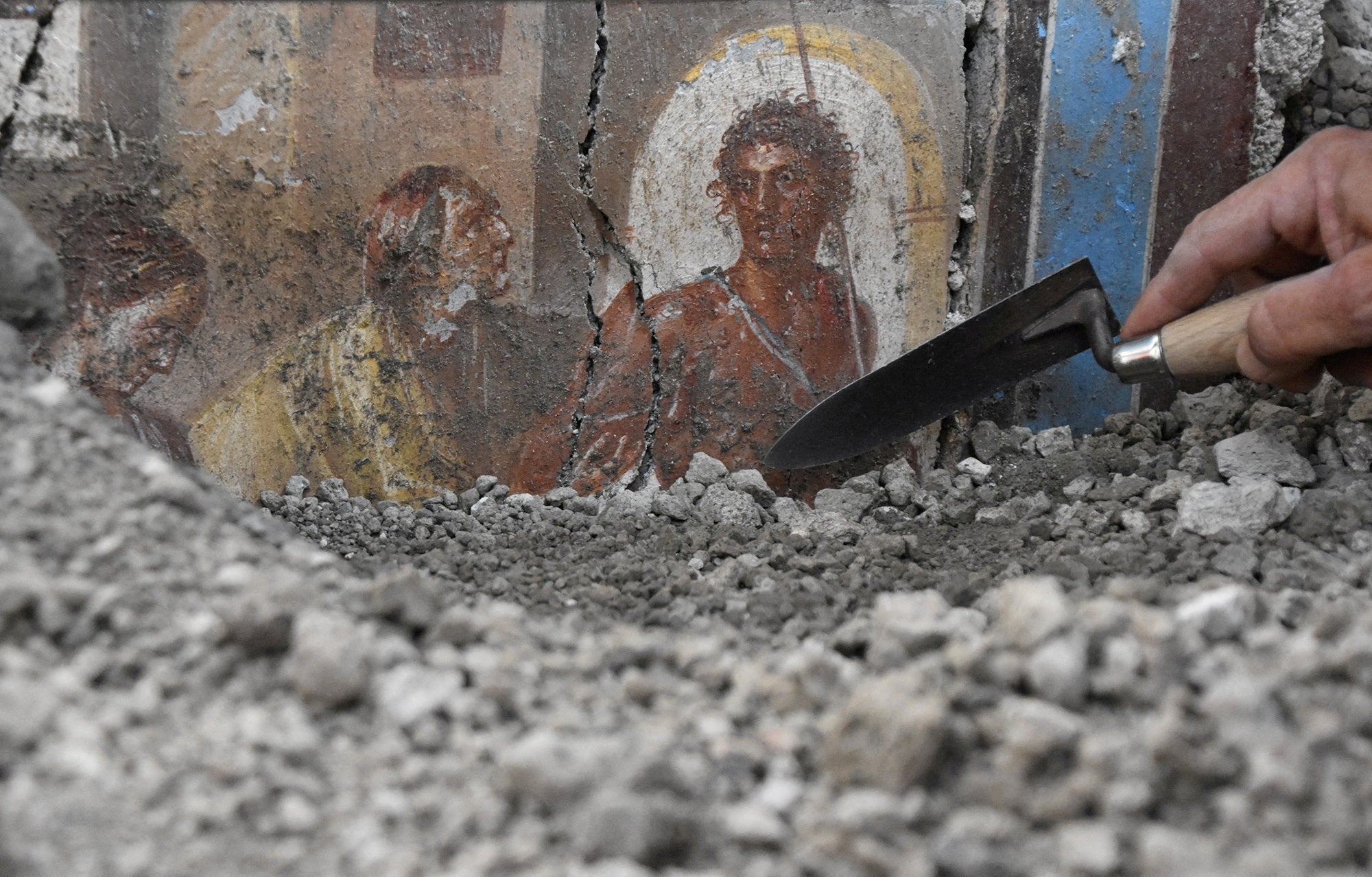
Typically, Pompeiian houses had open-air atriums with basins for collecting rainwater. The absence of one in this home is likely related to a shift in architectural styles. At the time, some Pompeii residents no longer felt the need for atriums, which were used as reception rooms and to display portraits and trophies, and replaced them with halls and courtyards.
But it’s the wall art that is most “striking,” according to the park. That includes a well-preserved fresco near the back of the house depicting the tragic Greek myth of Hippolytus and Phaedra.
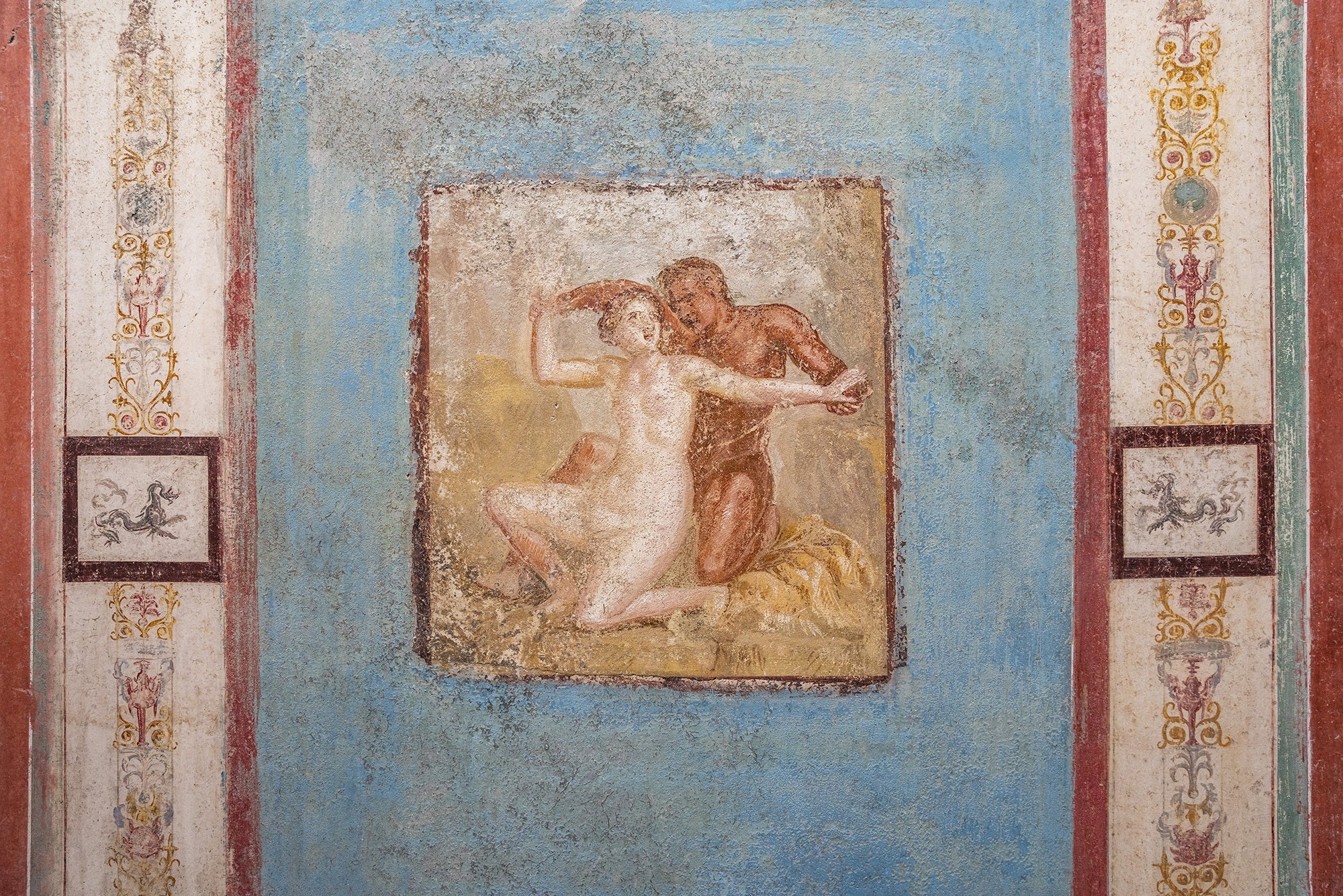
Other walls show scenes from different myths, including a painting believed to be of Venus and Adonis and another depicting the Greek myth known as the Judgment of Paris. In one painting, a satyr — a figure that’s part man and part goat — and a nymph embrace.
In a courtyard near the painting of Hippolytus and Phaedra, plant and animal motifs are painted on an altar, which is decorated with a bird of prey holding a palm branch. There are also two snakes that face each other.
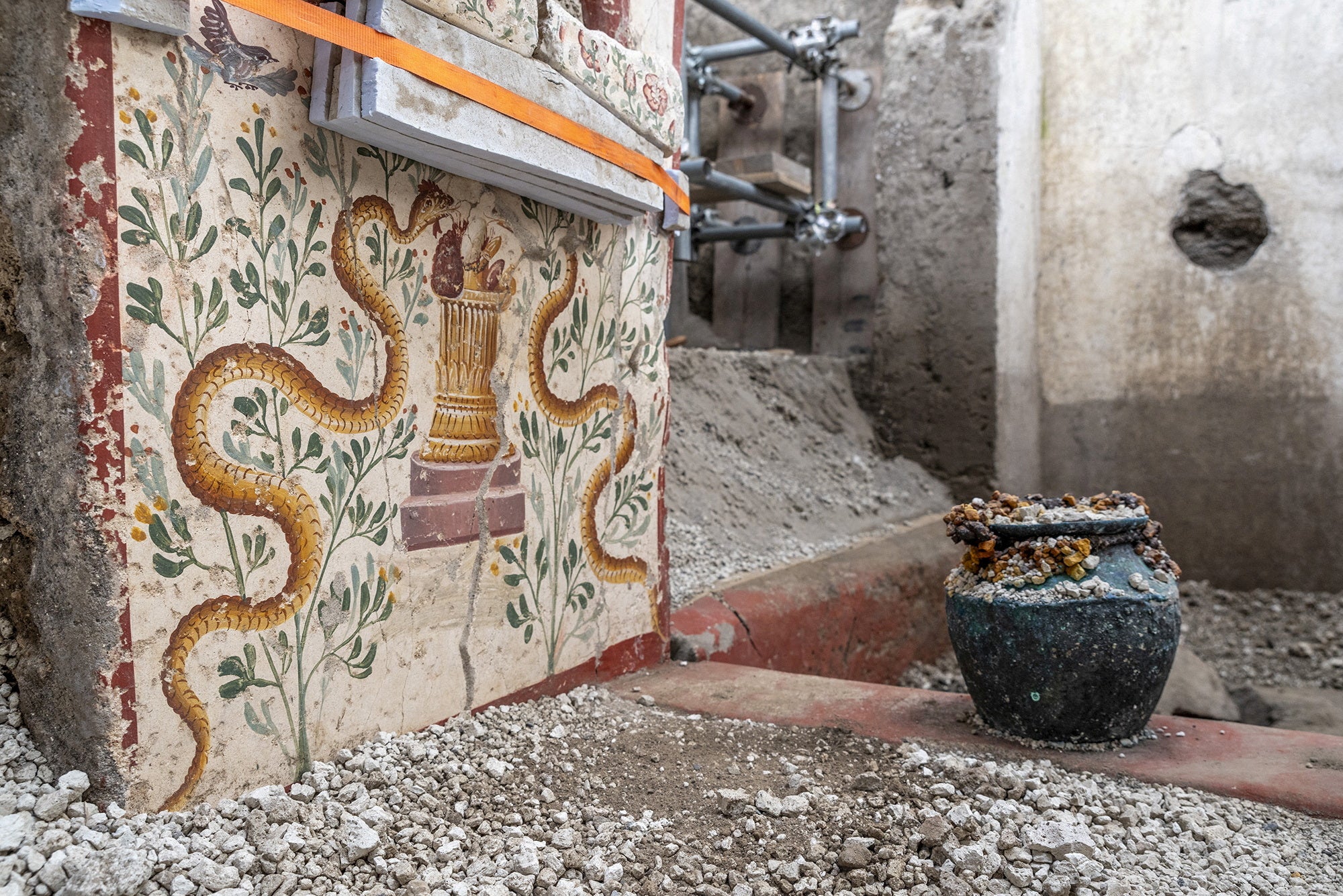
The archaeologists also found ritual offerings that were left behind when the 79 A.D. eruption took the lives of at least 2,000 people in and around Pompeii. Research published in 2021 found that the volcano killed the ancient city’s residents in just 15 minutes.
The park said there was an incense burner and a lamp that had evident traces of burning. Further analysis in a lab identified the remains of a dried fig and scented essences.
The altar’s surface had strips of colored marble, one that depicts a face that is attributable to a companion of Dionysus, the god of wine.
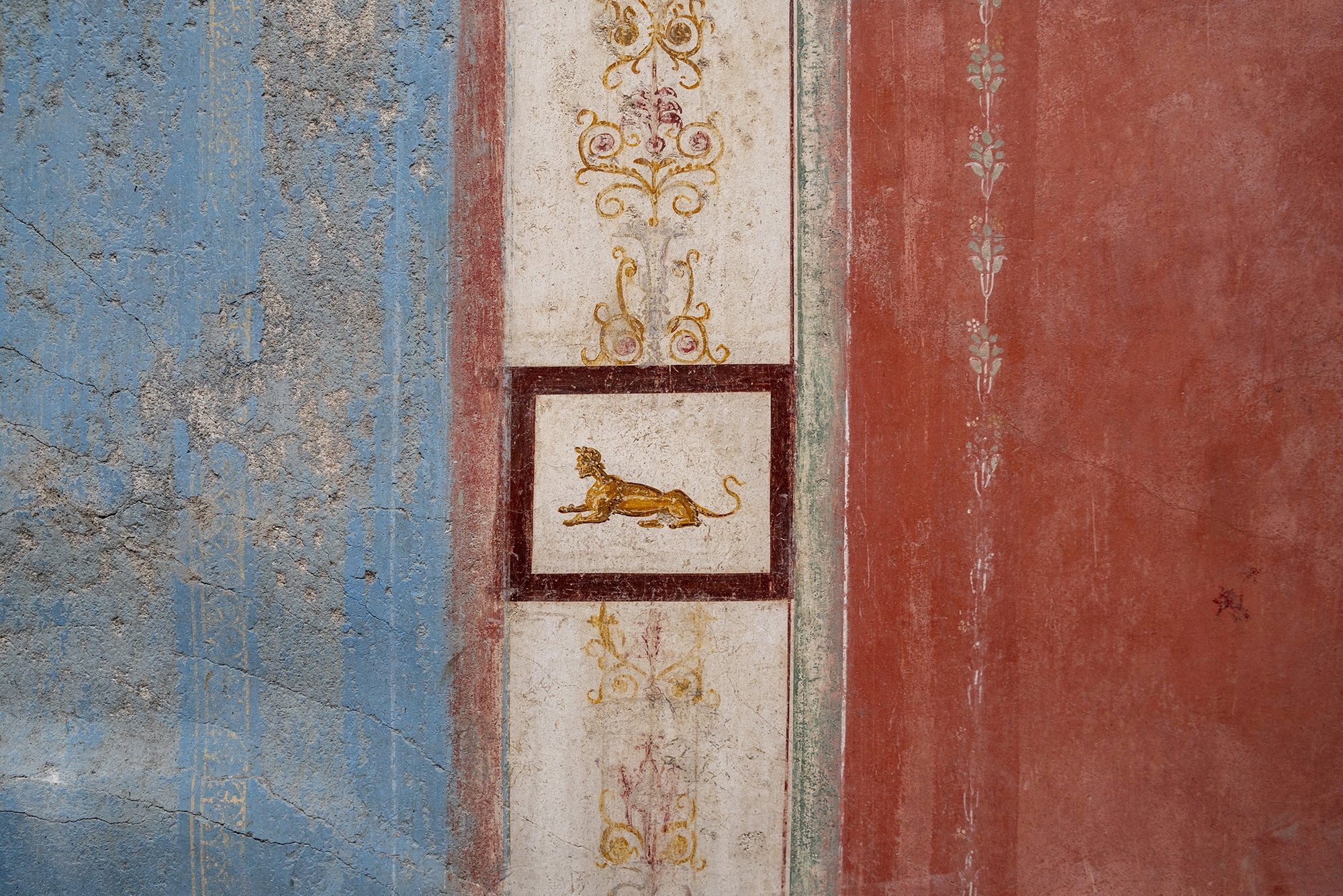
Lastly, they found an iron knife in the front part of the altar’s marble base.
Now, the archaeologists are working inside a series of rooms, and some parts of the construction site have been made available to the public.
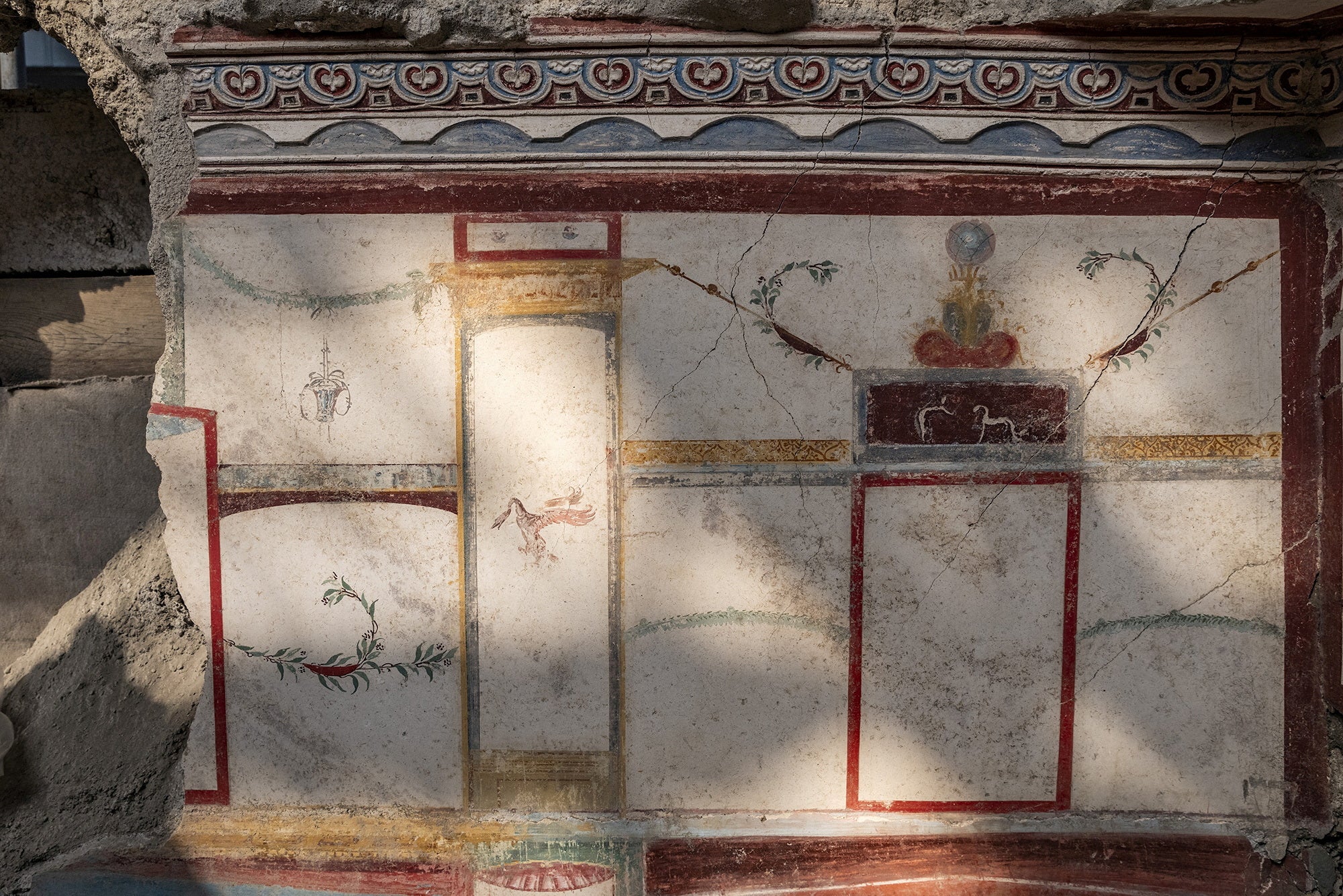
“It is an example of public archaeology or, as I prefer to call it, circular archaeology: conservation, research, management, accessibility and fruition form a virtuous circle,” Gabriel Zuchtriegel, the director of the park, said.

Join our commenting forum
Join thought-provoking conversations, follow other Independent readers and see their replies
Comments